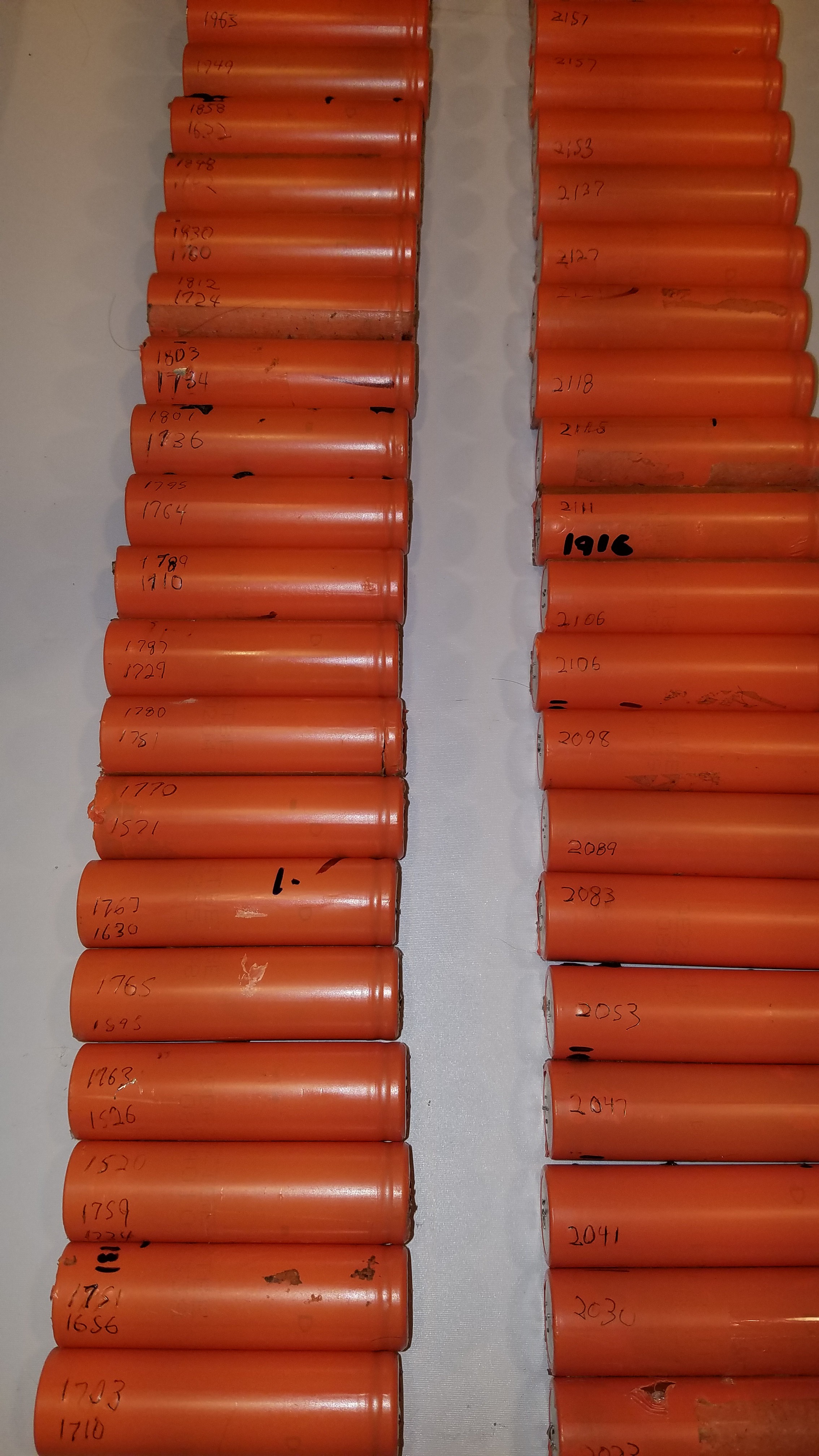Cycling the cells at least twice seems to be key to getting a stable capacity value.
This is likely due to some of them being at 2.8v when I got them. That's below the maximum recommended discharge voltage of 3.0v and likely due to them sitting in a discharged state for an extended period of time before they arrived at my desk.
Although the majority seem to have recovered fine from this, it took 2 cycles to bring them back up to their new maximum capacity. I'm sure they all lost some capacity in the process, but they are still usable.
I fully cycled all the low scoring cells at least twice and most recovered about 100mAh of capacity in the process.

For kicks, I tried cycling a few a third time. This resulted in a maximum 25mAh gain, and two even lost a few mAh. Twice seems to be the number.
<EDIT>
I've been moving on up from worst to best cycling them all a second time. The second cycle improvement numbers show no sign of stopping. The latest two cells went from 1974 to 2130 and 1976 to 2113. I'm going to have to do them all for my own sanity.
I need a good high amp charger so I can do them in parallel, or at this rate cycling them all again with my 2 cell desktop charger will take 168 hours. Ooof.
You can charge pretty much as many cells as you want in parallel. I'm not sure I fully understand how to do the charging properly though. What I read so far is... start out at constant current or 0.5-1.0C, at some point switch to constant voltage when you hit 4.20-4.25V, and then stop the charge when charge current drops to < 3% of C. Now how to do that in hardware...
</EDIT>
 Daren Schwenke
Daren Schwenke
Discussions
Become a Hackaday.io Member
Create an account to leave a comment. Already have an account? Log In.